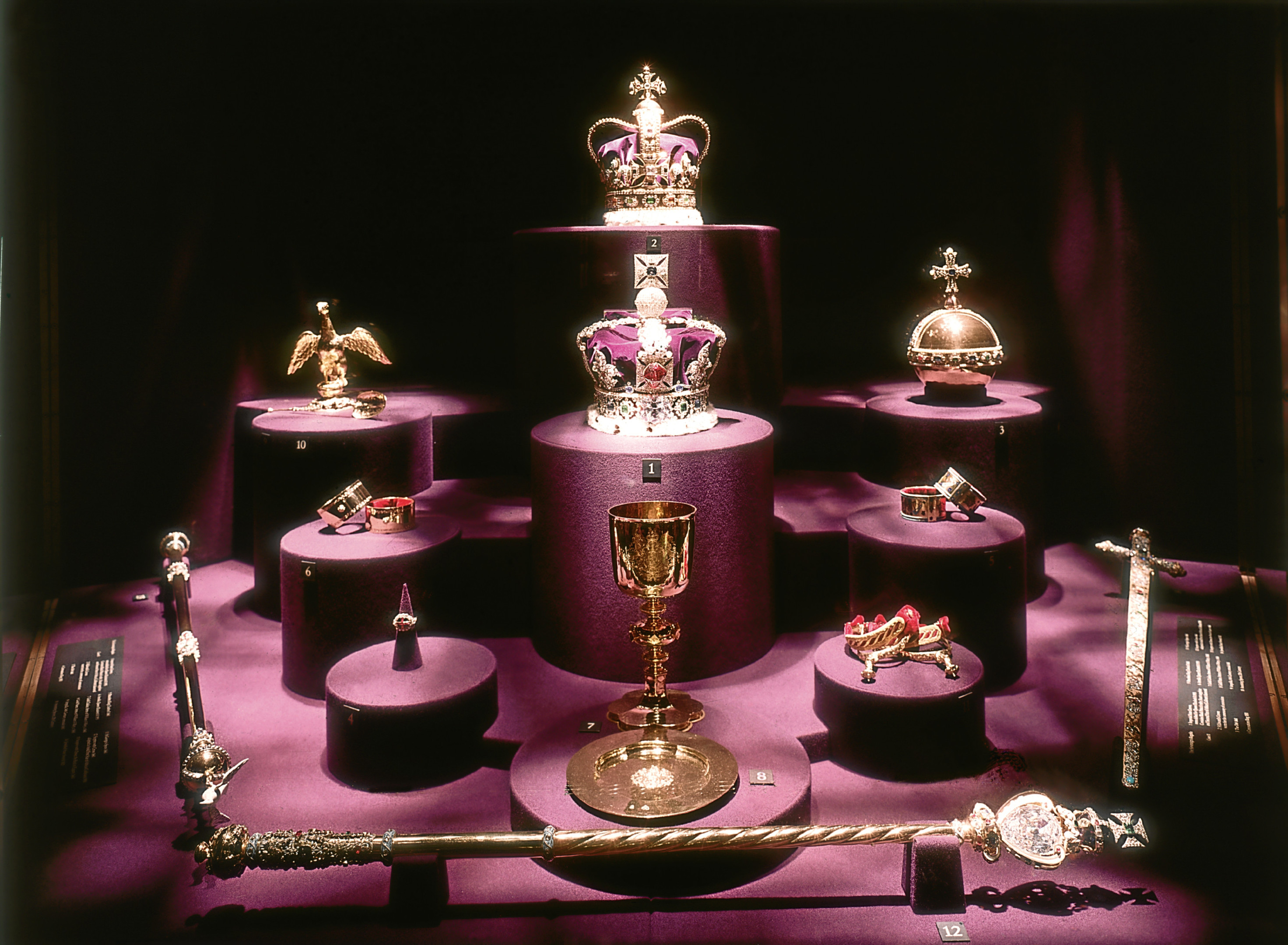
TODAY, the Crown Jewels are kept safe and sound in the Tower of London’s Jewel House.
This is an impregnable vault built in Waterloo Block, formerly a barracks, which was opened in 1994 by the Queen to house her most precious state regalia.
The priceless gems sit on red velvet behind bombproof glass, covered by 100 hidden CCTV cameras, guarded by a 22-man detachment of soldiers and 38 Beefeaters who can close the Jewel House’s six-inch-thick, two-tonne steel doors in a trice.
Which is all in stark contrast to the Second World War, when the Crown Jewels were hidden in a biscuit tin buried beneath Windsor Castle!
A week before the outbreak of war, work had already begun at Windsor with sandbags and gas-proof doors appearing and valuable works of art disappearing from their frames.
The Crown Jewels had arrived there from the Tower in August and had been placed in the keeping of Owen — later Sir Owen — Morshead, commander of the local Home Guard unit who just so happened to be in the middle of a 30-year spell as Royal Librarian.
For almost two years, he would live with the knowledge that these priceless and irreplaceable symbols of the British monarchy were locked in a vault underneath his study.
This was because in the summer of 1940, a highly-secret arrangement had been proposed.
Only four people knew of it — King George VI, Queen Elizabeth, Morshead and a certain Mr Mann.
The latter was a representative of the House of Garrard, the longest-operating jewellers in the world and who had received their first royal commission in 1735, providing the royal family with jewels ever since.
The plan was that when Lord Athlone, the King’s uncle, departed for Canada to become Governor General that June, he would carry with him copies of the Crown Jewels for their “safekeeping” from Nazi invasion and to fool the Germans that they were out of the country.
But it was decided there was a possibility the ship carrying the mock relics could be sunk by U-boat, in which case the morale of apparently losing the Crown Jewels could be catastrophic.
So the King summoned Morshead and Mann and ordered them to start taking apart the Crown Jewels.
They selected about a dozen of the most significant stones including the Koh-i-Noor, one of the largest diamonds in the world, pieces of the Cullinan Diamond and the Black Prince’s Ruby.
Most of the gems popped out of their settings without problem, but the men had to sever the joints holding the largest piece of the Cullinan to the front of the Imperial Crown.
Morshead then wrapped the stones in cotton wool and placed them inside a tall glass jar along with a note signed by George VI saying this had been done on his orders and it had been his wish that nobody be told.
The jar was then placed inside a Bath Oliver biscuit tin and the lid sealed with surgical tape.
Back into Morshead’s vault they went, with the King safe in the knowledge they could be safely transported in a low-key manner if the worst came to the worst, and be used as the nucleus of a new set of jewels.
At Windsor there were three “sally ports” — hidden entrances underneath the castle — and by 1941, the King and Queen were using one that ran underneath the south side of the complex as the basis for two strong rooms in which to store their most valuable treasures.
Accessed by a trapdoor in “an obscure little room” in between the York and Lancaster Gate and the Sovereign’s Entrance, a steeply-inclined shaft lay at the bottom of a 12-foot ladder, and two large caverns were excavated, reinforced by thick concrete and steel rails.
Piles of brilliant white chalk were hauled up the 35 feet to the surface and concealed by black tarpaulins until lorries could take them away under cover of night.
On May 6, 1941, the vaults were complete and — presumably to Morshead’s great relief — the Crown Jewels were taken from his safe and placed in the new strong rooms, where they remained concealed until the end of the war.

Enjoy the convenience of having The Sunday Post delivered as a digital ePaper straight to your smartphone, tablet or computer.
Subscribe for only £5.49 a month and enjoy all the benefits of the printed paper as a digital replica.
Subscribe